This post is also available in: Español
Lengua in Salsa Roja is a traditional Guatemalan dish. This Guatemalan recipe for lengua en salsa roja uses beef tongue cooked slowly in a rich tomato sauce, showcasing the depth of Guatemala’s food traditions. This beef tongue recipe combines the soft texture of this meat with the rich and flavors of the tomato sauce, making it one of my favorite Guatemalan recipes.
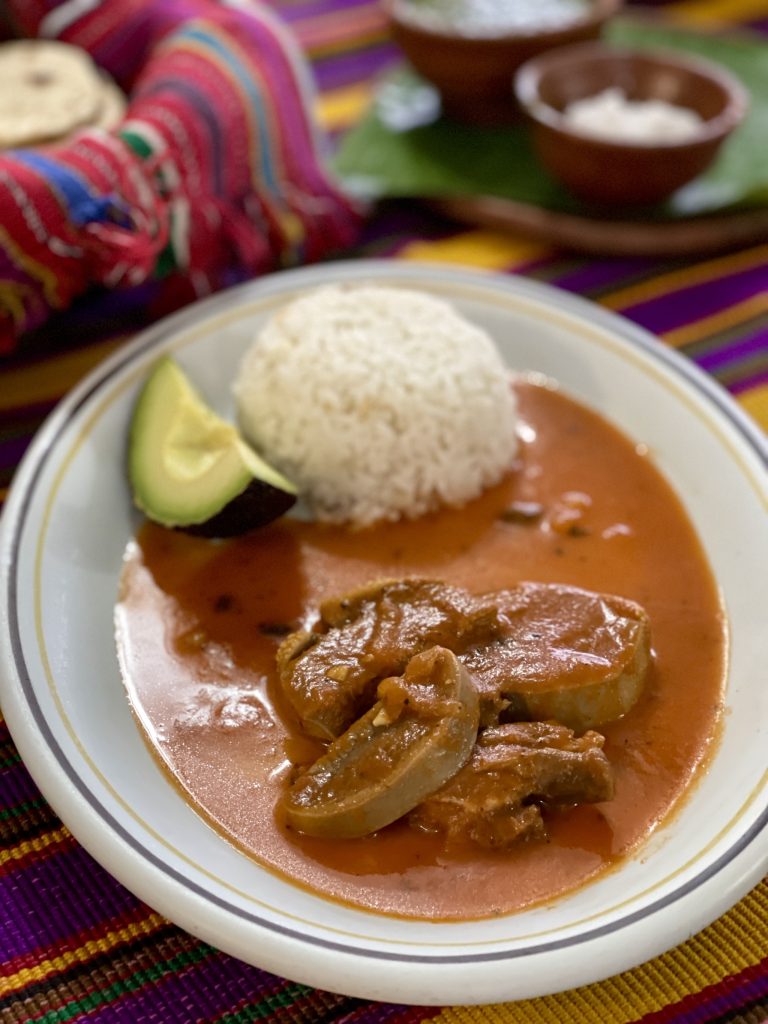
In Guatemala, this dish is often served on important occasions, showing its special place in the country’s cuisine. Lengua in Salsa Roja is a great example of the mix of local and Spanish influences in Guatemalan cooking. This recipe is not just about delicious food; it also celebrates the history and culture that have shaped Guatemala’s culinary landscape. As we explore how to make this dish, we connect with the traditions and stories shared over generations.
History and Origin of Lengua en Salsa Roja Recipe from Guatemala
The history and origin of Lengua en Salsa Roja (Tongue in tomato sauce), a traditional Guatemalan dish, are deeply rooted in the country’s rich cultural heritage and culinary traditions. Beef tongue, the main ingredient in this dish, has been a part of human cuisine for centuries and is appreciated in various cultures worldwide for its unique texture and flavor.
In Guatemala, as in many Latin American countries, beef tongue and other offal (organ meats) can be traced back to the colonial period. During Spanish colonization, cuts of meat considered less desirable by the colonizers, such as offal, were often left for the indigenous and mestizo populations. These communities, skilled in making the most of available resources, developed a variety of dishes that turned these ingredients into flavorful, nourishing meals.
Lengua en Salsa Roja is a testament to this resourcefulness and culinary creativity. The dish combines the tender, slow-cooked beef tongue with a rich tomato-based sauce (salsa roja). The salsa roja or recado is a staple in Guatemalan cuisine, showcasing the influence of Spanish cooking techniques and incorporating local ingredients like tomatoes, chilies, and herbs.
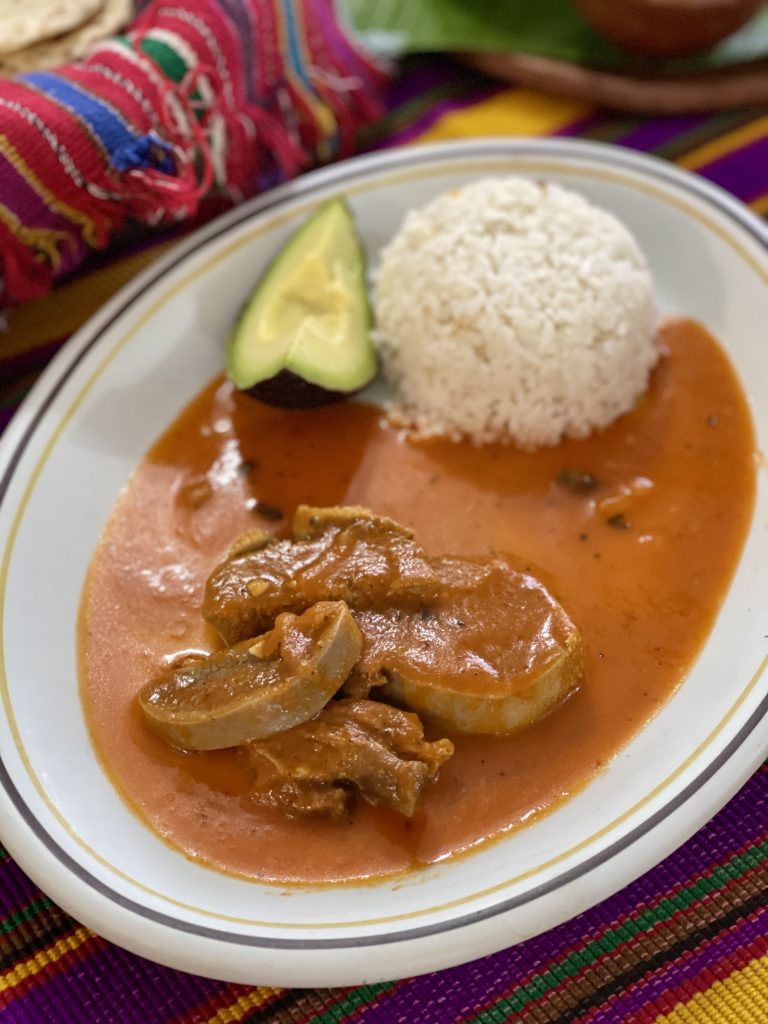
This dish is a part of Guatemala’s culinary history and represents the fusion of indigenous and Spanish influences that define much of Latin American cuisine. Like many traditional Guatemalan dishes, Lengua en Salsa Roja reflects a blending of cultures and adapting ingredients and techniques over time to create something uniquely Guatemalan.
Today, Lengua en Salsa Roja is considered a delicacy and is often served on special occasions and in traditional restaurants, continuing to be a beloved part of Guatemala’s rich and diverse culinary heritage.
What Does Beef Tongue Taste Like?
Beef tongue has a mild, somewhat fatty flavor and is known for its tender, soft texture. The taste is often compared to that of a roast beef, but with a more delicate and buttery profile. It is a rich cut of meat that absorbs the flavors of the ingredients it is cooked with, making it a versatile ingredient in many cuisines. The key to its appeal lies in its preparation and slow cooking, which allows it to become tender and infused with the flavors of the accompanying sauce or seasonings.
Tips for cooking tongue and making the best lengua en salsa roja recipe.
Cooking beef tongue and preparing a delicious Lengua en Salsa Roja can seem daunting at first, but with these tips, you can ensure a flavorful and tender result:
Tips for Cooking Beef Tongue:
- Rinse and Clean: Begin by thoroughly rinsing the beef tongue under cold water. Removing any residue is essential for a clean taste.
- Long, Slow Cooking: Beef tongue requires a long, slow cooking process to become tender. Simmer it on low heat for 2-3 hours. The tongue is ready when you can easily pierce it with a fork.
- Flavor the Cooking Water: Add aromatic ingredients like onions, garlic, and bay leaves to the cooking water. This infuses the tongue with subtle flavors.
- Peeling the Skin: Once cooked, let the tongue cool slightly until you can handle it. Then, peel off the outer skin layer. It should come off easily if the tongue is cooked properly.
- Slice Evenly: For an even texture and appearance, slice the tongue into consistent, half-inch pieces.
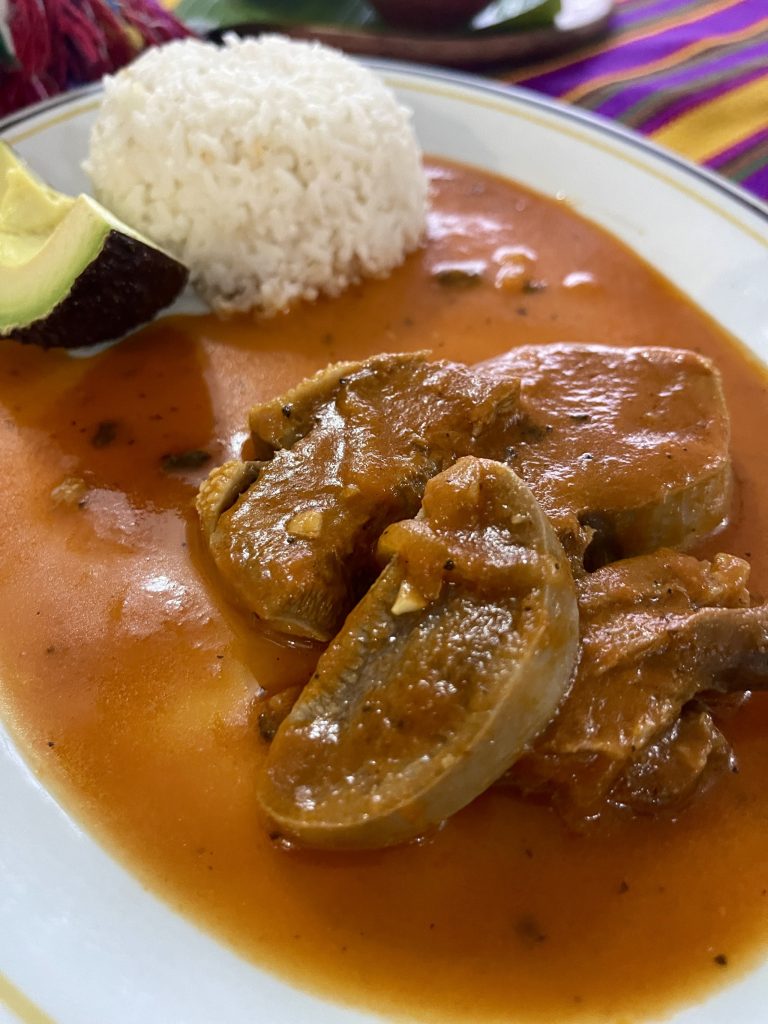
Tips for Making the Best Lengua en Salsa Roja:
- Quality Ingredients: Use ripe, fresh tomatoes and fresh herbs for the best flavor in your salsa roja.
- Balancing Flavors: Adjust the heat to your liking with jalapeño peppers. Remember, you can always add more, but you can’t take it away.
- Saute to Enhance Flavors: Sauté the onions and garlic until they are translucent before adding other ingredients. This step is crucial for developing a rich flavor base.
- Simmer for Fusion: After combining the tongue with the salsa roja, simmer them together to allow the flavors to meld. This step is key to a well-rounded dish.
- Garnish Freshly: Fresh cilantro adds a burst of freshness and color, enhancing the overall flavor profile of the dish.
- Consistency of the Sauce: If the salsa is too thick, you can thin it with a little water or broth. If it’s too thin, simmer it for a longer time to reduce and concentrate the flavors.
- Rest Before Serving: Let the dish rest for a few minutes off the heat before serving. This allows the flavors to settle and integrate better.
By following these tips, you can make a flavorful and tender Lengua en Salsa Roja, a dish that’s sure to impress with its depth of flavor and comforting qualities. Patience and attention to detail are key to bringing out the best in this traditional Guatemalan recipe.
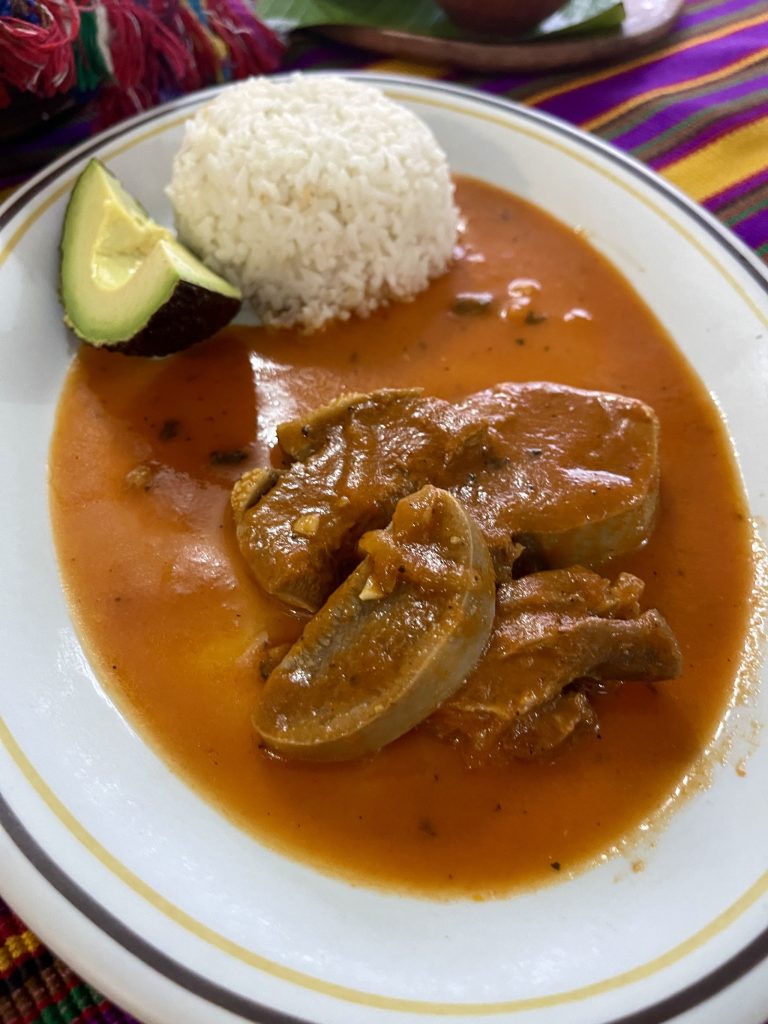
Guatemalan Lengua in Salsa Roja (Beef Tongue in Red Sauce) Recipe
Ingredients:
For the Beef Tongue:
- 1 beef tongue (about 2-3 pounds)
- 1 large onion, quartered
- 2 cloves garlic
- 2 bay leaves
- Salt and pepper, to taste
- Water, enough to cover the tongue
For the Salsa Roja:
- 4-5 ripe tomatoes, chopped
- 1 medium onion, finely chopped
- 2 cloves garlic, minced
- 1 red bell pepper, chopped
- 1 teaspoon ground cumin
- 1 teaspoon dried oregano
- Salt and pepper, to taste
- 2 tablespoons vegetable oil
- Fresh cilantro, chopped (for garnish)
- 2 tablespoons of Nonpareils (optional)
- 1/4 cup sliced green olives (optional)
Procedure:
-
Cook the Tongue:
- Rinse the beef tongue under cold water.
- Place the tongue in a large pot and add quartered onion, garlic cloves, bay leaves, salt, and pepper.
- Cover with water and bring to a boil. Reduce heat to a simmer and cook for about 2-3 hours, or until the tongue is tender.
- Once cooked, remove the tongue from the pot and let it cool. Peel off the outer layer of the tongue and slice it into half-inch pieces.
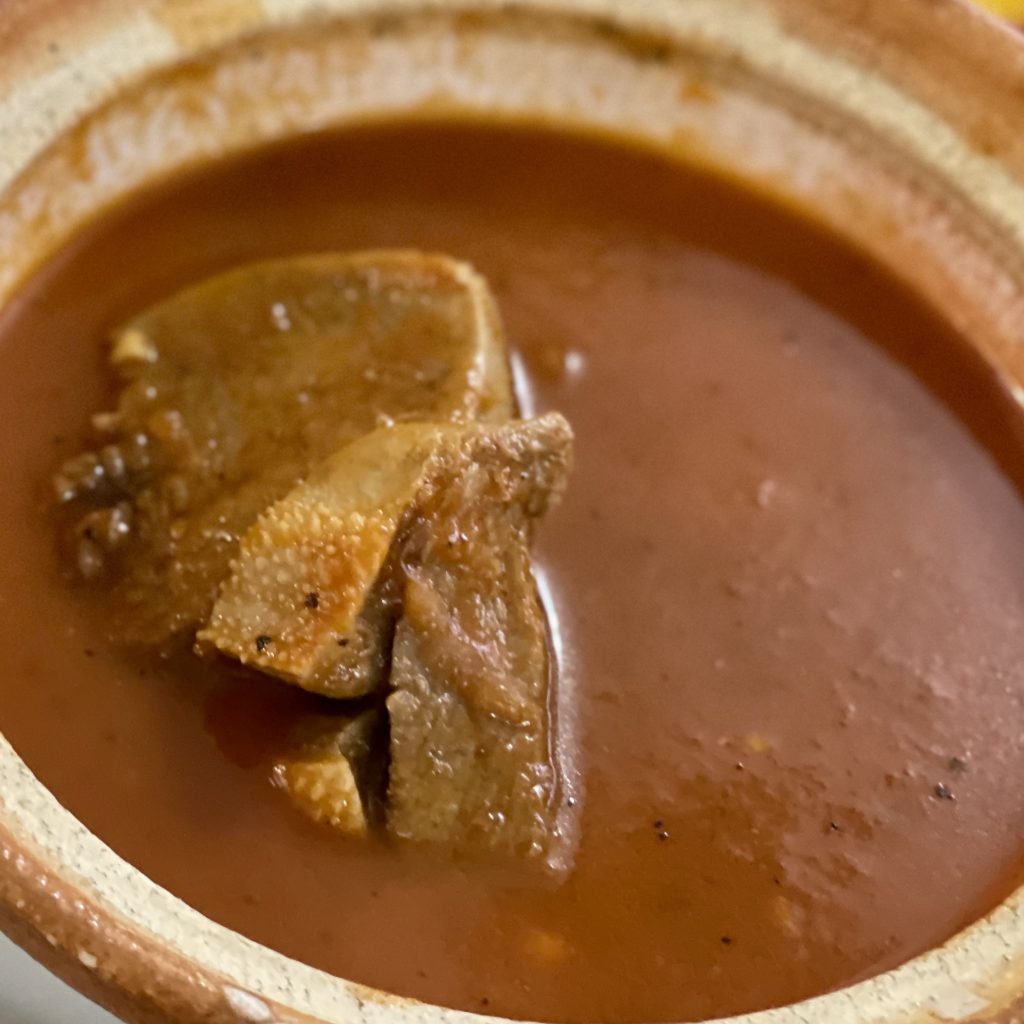
-
Prepare the Salsa Roja:
- In a pan, heat the vegetable oil over medium heat.
- Sauté the chopped onions and minced garlic until they become translucent.
- Add the chopped tomatoes, red bell pepper, jalapeño peppers, cumin, and oregano. Cook for about 10 minutes until the vegetables are soft.
- Blend the mixture using a blender or food processor to create a smooth sauce. Return the sauce to the pan.
- If you are adding olives and nonpareils add them to the sauce.
-
Combine Tongue and Sauce:
- Add the sliced beef tongue to the sauce in the pan.
- Simmer the mixture for an additional 10-15 minutes, allowing the flavors to meld together.
- Season with salt and pepper to taste.
-
Serve:
- Garnish with chopped fresh cilantro.
- Serve hot with rice, tortillas, or your preferred side.
Note: The cooking time for the beef tongue may vary depending on its size and the tenderness you desire. The key is to ensure it’s cooked until it’s soft and easy to slice. The salsa roja can be adjusted for heat by varying the amount of jalapeño peppers. This dish is a classic example of Guatemalan comfort food, rich in flavors and perfect for a hearty meal.
Cooking Beef Tongue in the Crockpot or Instapot
Using a Crockpot or an Instant Pot can make cooking beef tongue more convenient, as these methods require less monitoring and can tenderize the meat effectively.
To adapt the Lengua en Salsa Roja recipe for a Crockpot (slow cooker) or an Instant Pot (pressure cooker), you can follow these modifications:
Crockpot Method:
- Preparation: Rinse and clean the beef tongue as usual. You can brown the tongue in a skillet for added flavor, but this is optional.
- Cook the Tongue: Place the beef tongue in the Crockpot and add onions, garlic, bay leaves, salt, and pepper. Cover with water. Cook on low for 8-10 hours or on high for 4-5 hours, until the tongue is tender.
- Make Salsa Roja: While the tongue is cooking, prepare the salsa roja on the stovetop as per the original recipe.
- Combine and Cook: Once the tongue is cooked and peeled, add it to the salsa roja. You can either add the salsa directly into the Crockpot and let it cook together for another 30 minutes, or serve the tongue with the sauce on top.
Instant Pot Method:
- Sauté in Pot: Use the sauté function to brown the tongue (optional) and to cook the onions and garlic for the salsa.
- Cook the Tongue: Add the beef tongue, bay leaves, salt, and pepper to the pot. Cover with water. Seal the lid and cook on high pressure for 50 minutes to 1 hour.
- Natural Release: Allow for a natural release of pressure for 20 minutes, then carefully do a quick release for any remaining pressure.
- Prepare Salsa Roja: While the pressure is releasing, prepare the salsa roja on the stovetop as per the original recipe.
- Combine and Serve: Once the tongue is cooked and peeled, slice it and combine it with the prepared salsa roja. If desired, you can put everything back into the Instant Pot and use the sauté function to simmer them together for a few minutes.

General Tips for Both Methods:
- Texture Check: The key indicator of doneness for the tongue is its tenderness. In the Crockpot, this may take longer than in the Instant Pot.
- Adjusting Liquid Levels: You may need less liquid in the Instant Pot since there’s less evaporation. Ensure the tongue is just covered with water.
- Final Seasoning: Always taste and adjust the seasoning of the salsa roja before combining it with the tongue.
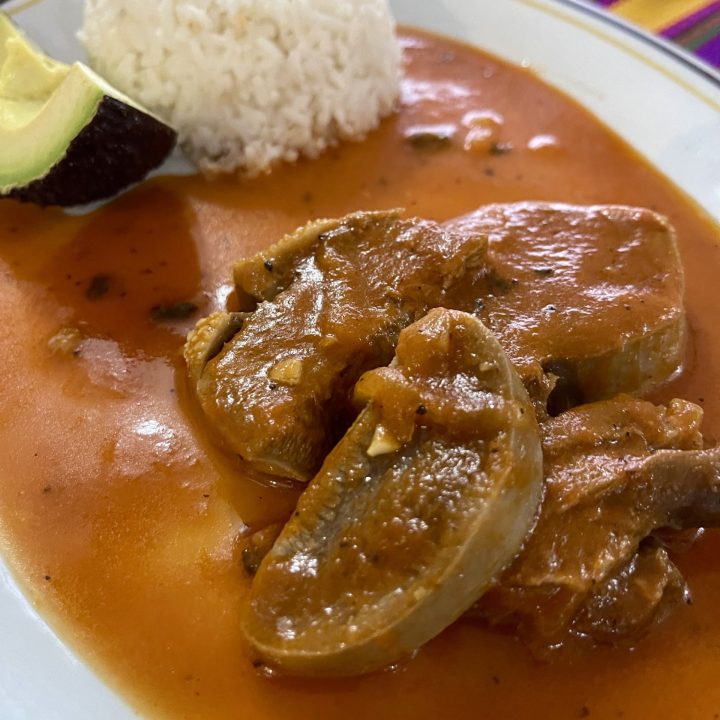
Beef Tongue in Tomato Sauce Recipe (Lengua en Salsa Roja)
Ingredients
- FOR THE BEEF TONGUE
- 1 beef tongue (3 to 4 punds)
- 1 large onion, quartered
- 2 cloves garlic
- 2 bay leaves
- Salt and pepper, to taste
- Water, enough to cover the tongue
- FOR THE TOMATO SAUCE (SALSA ROJA)
- 4-5 ripe tomatoes, chopped
- 1 medium onion, finely chopped
- 2 cloves garlic, minced
- 1 red bell pepper, chopped
- 1 teaspoon ground cumin
- 1 teaspoon dried oregano
- Salt and pepper, to taste
- 2 tablespoons vegetable oil
- 2 tablespoons of Nonpareils (optional)
- 1/4 cup sliced green olives (optional)
- 1/4 cup fresh cilantro, chopped (for garnish)
Instructions
Cook the tongue:
- Rinse the beef tongue under cold water.
- Place the tongue in a large pot and add quartered onion, garlic cloves, bay leaves, salt, and pepper.
- Cover with water and bring to a boil. Reduce heat to a simmer and cook for about 2-3 hours, or until the tongue is tender.
- Once cooked, remove the tongue from the pot and let it cool. Peel off the outer layer of the tongue and cut it into half-inch slices.
Prepare the Salsa Roja:
- In a pan, heat the vegetable oil over medium heat.
- Sauté the chopped onions and minced garlic until they become translucent.'
- Add the chopped tomatoes, red bell pepper, jalapeño peppers, cumin, and oregano. Cook for about 10 minutes until the vegetables are soft.
- Blend the mixture using a blender or food processor to create a smooth sauce. Return the sauce to the pan.
- If you are adding olives and nonpareils, add them to the sauce.
Combine Tongue and Sauce:
- Add the sliced beef tongue to the sauce in the pan.
- Simmer the mixture for an additional 10-15 minutes, allowing the flavors to meld together.
- Season with salt and pepper to taste.
Serve:
- Garnish with chopped fresh cilantro.
- Serve hot with rice, tortillas, or your preferred side.
Notes
The cooking time for the beef tongue may vary depending on its size and the tenderness you desire. The key is to ensure it's cooked until it's soft and easy to slice. The salsa roja can be adjusted for heat by varying the amount of jalapeño peppers. This dish is a classic example of Guatemalan comfort food, rich in flavors and perfect for a hearty meal.
Other Great Guatemalan Stew Recipes
Pepián De Pollo
Pepián de pollo, or chicken pepián, is one of the oldest Guatemalan recipes. This chicken stew is rich in flavors and roasted spices. You can make it with chicken, beef, or pork (or a combination of all). You stew the meat in a tomato-based sauce with roasted seeds and peppers. Adding potatoes and carrots, with white rice as a side dish, makes this recipe a complete meal.
Hilachas
Hilachas is a traditional Guatemalan dish similar to the Mexican Ropa Vieja recipe. It is a flavorful, shredded beef stew simmered in recado sauce. The brisket shredded into fine strips gives this Guatemalan dish its raggedy consistency. Nevertheless, it is one of the most delicious Guatemalan foods you’ll ever taste!
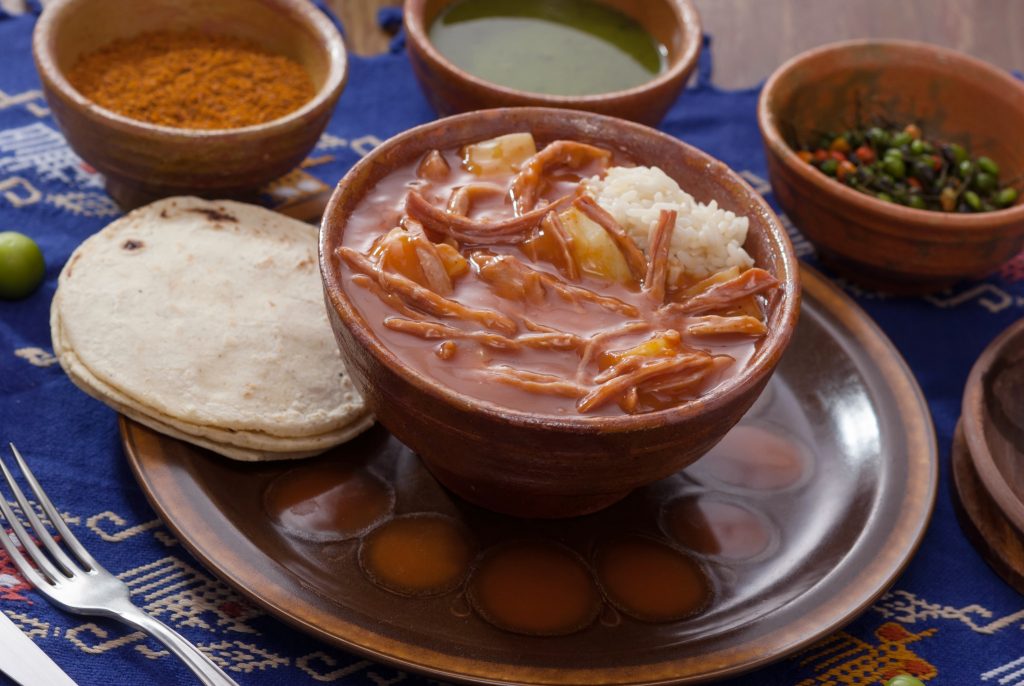
Subanik
Subanik is a beloved traditional Guatemalan stew renowned for its hearty, flavorful taste. It is made with three different types of meat simmered in a spicy-sweet tomato stew and chilies. Then, the casserole is seasoned with onions, garlic, and herbs and thickened with corn flour or masa. Traditionally, Subanik is wrapped in a mashan leaf nest, tied with a Cibaque rope, and steamed to perfection.
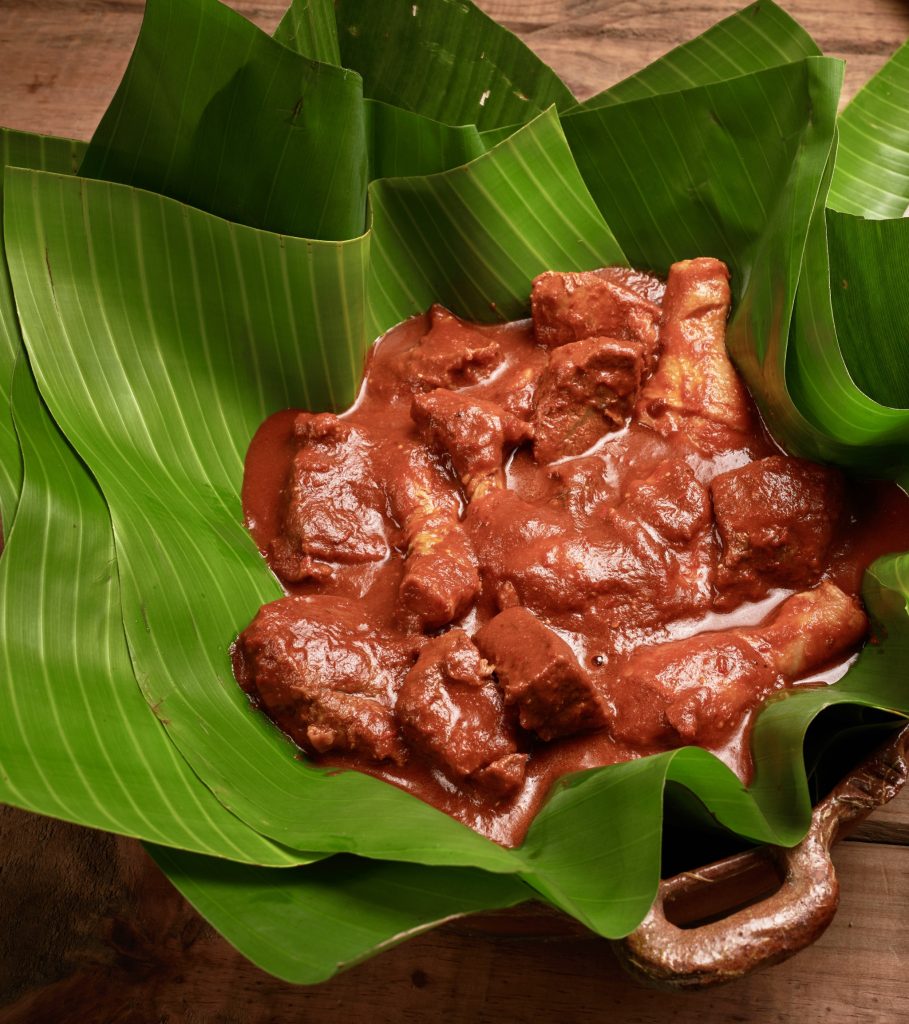
- Sumpango vs. Santiago Sacatepéquez: Which Giant Kite Festival In Guatemala Is Right for You? - April 27, 2025
- Guatemala’s Giant Kite Festival in Santiago Sacatepéquez: All You Need to Know Before You Go - April 27, 2025
- The Giant Kite Festival in Guatemala: Insider Tips for Experiencing Sumpango’s Barriletes Gigantes - April 26, 2025



Hi. Thank you for this recipe. (Lengua Criollo, specifically Guatemalan). I had this year’s ago in a little “illegal restaurant” in Delaware, and have been looking for it ever since. I’m writing to thank you, and to ask if this freezes well. If it does, should I freeze the components separately. Thanks again. I’m making this as soon as the guy comes to fix my stove-Wednesday.
Amy G